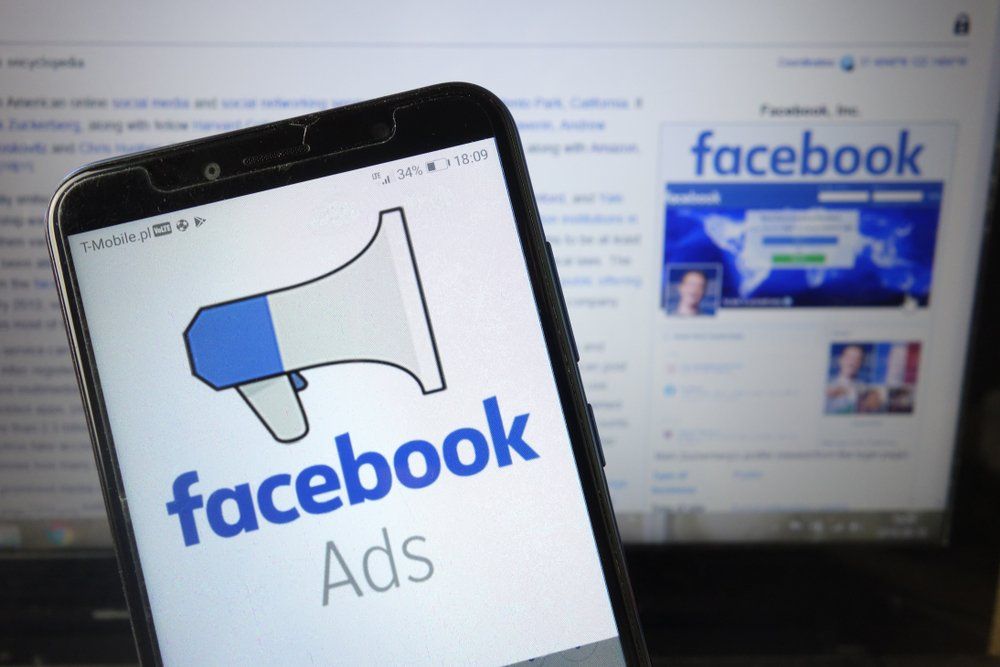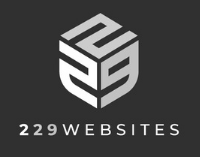How to Create An Effective Facebook Ad Strategy in 2022

How to Create An Effective Facebook Ad Strategy in 2022
When it comes to spending your advertising budget, you may be unsure how to get the most bang for your buck. After all, there are so many different advertising and marketing options out there. How do you know which will best suit your business, reach your desired audience, and give you the biggest return on your investment?
Even with all of the changes Facebook has undergone in the past few months, it’s still a great place to advertise your business. Ads are affordable and you have the ability to target your "ideal" customers. With approximately 1.93 billion people using this social media platform each day, you’re bound to reach the audience you’re looking for.
Like any marketing or advertising platform, you’ll want to go into this endeavor with a solid plan or strategy. Without one, you might as well be tossing flyers off a bridge and hoping for the best.
Source:
blog.hubspot.com
Benefits of advertising on Facebook
While you can certainly make the argument that Facebook ads are becoming less effective than they were in the past, it’s still the social media network with the most active users—not to mention it also covers Instagram. That’s why it’s important to use intentional Facebook ad strategies to ensure you’re not wasting budget on ads that don’t contribute to the bottom line.
There are a few key advantages to advertising on Facebook:
Advanced options to target your ads to specific audiences
Seamless ecommerce integration
Insightful data analytics
One of the largest social networks
Access to Facebook’s entire Ad Library
Options for every budget
You can use Facebook ads for both customer acquisition and retention. It’s a great way to build brand awareness and advertise to new potential buyers, as well as nurture relationships with people who already know your brand. In fact, Facebook offers three key goals or objectives to choose from for each ad:
Awareness. Use this objective if you’re new to business or advertising on Facebook and want to attract new customers. You may also use awareness goals to launch a new product line or promote an event.
Consideration. This is sort of the next step in our Facebook ad journey—after your audience has some awareness of your offering, you’ll want to hit them with ads that provide more information. These ads should drive engagement or help you collect leads.
Conversion. The final step in the journey is getting people to convert. Maybe that means purchasing a product, or maybe you want people to visit your website, get directions to your physical store, or fill out a form providing you with their information.
There really is no benchmark or telltale sign for when you should consider Facebook ads. In fact, the platform offers opportunities for almost every business and budget.
Source:
shopify.com
Objectives
Before you even start choosing an audience or creating content for advertising, it’s important to know why you are running your campaign. This will help you determine the scope of the campaign, in addition to how much budget you’ll need and what kind of content to choose. Knowing your ultimate goal will also make it easier to choose what features you need.
Source: nealschaffer.com
1. Choose your campaign objective wisely
Facebook has spent time making ads manager easier for you to use. But if you don’t choose the right objective, you will be unable to access important features due to the presets that Facebook creates for each objective. Remember, even though Facebook is making it harder to use the organic feed traffic, they still want you to succeed. Combine your Facebook ads strategy with their built-in tools.
Right now, you can choose from the following Facebook-defined objectives:
Awareness / Brand Awareness– Show ads to people most likely to remember them. In other words, people who have an interest in your kind of product and service. Facebook will know this from analytics they’ve gained on the customer.
Awareness / Reach– Show ads to the maximum number of people. This is the closest thing to “spray and pray” on Facebook Ads.
However, there are some reasons to do this, especially when you’re a brand with universal appeal (car dealerships, repair shops, and so forth).
Consideration / Traffic– Send people to a destination like your website. From here, you’ll both boost your website stats but also get ample opportunity for converting leads to customers.
Consideration / Engagement– Get more people to engage with one of your Facebook posts. Use this when you want to create “buzz” around something. For example, a product launch or your overall “brand community.”
Consideration / App Installs– Only if you have an app, because you’re trying to convince people to install it. Of course, these can be any kind of app, so long as it’s brand related.
Consideration / Video Views– Convenient when you want to build custom audiences from video views or when showing video ads.
Consideration / Lead Generation– Use Facebook Lead Ads to boost your direct sales efforts. Especially useful for B2B and professional services brands.
Consideration / Messages– The CTA is a Facebook Messenger/WhatsApp/Instagram Direct Message button. From here, you can interact with the potential customer using AI-based bots, real humans, or both.
Conversion / Conversions – Shows your ad to those most likely to take action on it, but this only works well if you have a conversion event defined in Facebook Ads. This makes it a more advanced option.
Conversion / Catalog Sales– Used best with Dynamic Product Ads to showcase your catalog of products. These are great when you have an ecommerce site.
Conversion / Store Traffic– Shows ads to people nearby or most likely to visit your physical store. Choices can include demographic information as well as location, so it’s useful for retailers of all sizes.
While every company will be different, from my own experience of working with clients, the most popular Facebook Ads campaign objectives being utilized, and their measurement counterparts, are:
Consideration / Traffic (cost per click). In other words, this is where my clients pay Facebook to drive traffic to their website. This is especially effective for professional services websites, bloggers, and similar.
Consideration / Video Views (cost per TruView). Here, if the targets don’t watch the video, you don’t have to pay. This makes it a cost-effective option.
Conversion / Conversions (cost per conversion). With this option, you pay for how many conversions you get as a result of the ads.
Online conversions are tracked by cookies; location-based ones use other methods.
Source: nealschaffer.com
2. Create Realistic Buyer Personas
Who is your best customer?
You need to know that before you figure out the UVP (Unique Value Proposition—the value you propose to give) for your Facebook campaigns.
Dig into demographics:
What do they look like?
How old are they?
Are they married?
Do they own a home or rent a condo (or run a farm)?
Do they commute via public transit or drive a car (or a tractor)?
Is that car a Kia or a Tesla (or is it a Ford F250 truck)?
What’s their income bracket?
Do they like dogs or chickens?
Answer those questions.
If you need help answering those questions, study Facebook ad targeting to understand who your buyer is as a person. Get cozy with your buyer persona(s)—the story of a real person, not some abstract digital wallet.
Match your ad to their expectations. Speak their language.
When it comes to Facebook ads, knowing your target audience means knowing their pain points, interests, location, and purchase behaviors.
And here’s a pro tip that’s one step above the regular buyer persona exercise: understand how your buyer personas identify themselves.
Autopilot, for instance, talks the language of their ideal customer, a SaaS business owner. Their Facebook ad headline says “How To Nail Your SaaS Trial.”
Getting trial users to sign up for a paid subscription is a struggle for software vendors.
You won’t know who to target with your Facebook ad campaigns if you haven’t got a clue what your ideal customer needs.
I promise that the hours you spend on customer development is time well spent. You’ll know whom to target, when to target them, and what offer has the best chance of winning that click.
Source: klientboost.com
3. Use Giveaways and Contests
Facebook contests needn’t focus on sales all the time. You can instead offer a potential high-value prize to create increased brand awareness that will pay off in the long run by bringing new leads into your conversion funnel. Before committing to a contest or giveaway strategy, review Facebook’s policies to ensure you aren’t violating any of their rules.
Source: blog.hubspot.com

4. Nurture repeat customers through Facebook Custom Audiences
Facebook Custom Audiences are groups of Facebook users who know about your brand to a certain extent. This means that they’ve visited your website before, engaged with your Facebook page or posts, signed up for your emails, made a purchase, or engaged with your brand in some other way.
Essentially, Facebook takes the customer data you give it and compares that data to Facebook users, eventually matching your customers to individual users. Facebook then creates groups of these people, allowing you to target them with different ad campaigns.
You can create four types of Custom Audiences:
Website Custom Audiences. Build these audiences from users who have visited your website or a specific page on your website.
App activity Custom Audience. These segments are made up of people who have engaged with your mobile app or taken a specific action within your mobile app.
Customer list Custom Audience. Import a customer list spreadsheet and Facebook will match the data to its users to build this audience group.
Engagement Custom Audiences. Groups of people who have engaged with your Facebook content or ads in the past, including watching a video, submitting a lead form, or viewing your Facebook page. This is a great source for building Lookalike Audiences (more on that next).
Source: shopify.com
5. Facebook Pixel
Conversion tracking is the boring cousin of shiny ad designs and flashy headlines. But, in case you haven’t noticed, being a nerd is pretty damn cool.
And the nerd in you knows that the shiny stuff must be measured.
For Facebook ads, the tool we use to gauge how we’re doing (metrics) is the Facebook Pixel.
Source: klientboost.com
6. Facebook Ads + Google Ads = A Match Made in Heaven
If you don’t appreciate what you’ve done up to this point, you’ve set a rock-solid foundation for your Facebook strategy.
The launch pad is done.
Let’s see about bringing in the helos.
The good thing about digital marketing is that you don’t have to choose a single channel. You don’t have to place large bets on one thing and then sit back and pray things will roll the right way.
It’s the opposite.
With digital marketing channels, the fun is how you combine multiple campaigns and lead sources to support each other throughout your conversion funnel.
Source: klientboost.com
7. Create Ad Funnels to engage potential customers at each stage of the funnel with relevant ads
If some Facebook users have never heard of your product, some are aware of it but not customers, and some are customers, consider leveraging Facebook for 3 different campaigns. These should be optimized for people wherever they are in your funnel with the intention of bringing them to the next step. Of course, you should always remember to turn existing customers into brand advocates.
Source: nealschaffer.com
Conclusion
When it comes time to devise your Facebook ad strategy, the most important thing you can do is understand your audience better. All of the fancy strategies and new tricks won’t help if you don’t know who you are selling to and how close they are to making a purchase.
Spend some time getting to know your ideal customer, learning who they are, what they do, and what they want. Once you understand where your potential customers are in their buying journey, you can better usher them towards purchasing your product.
Facebook may have changed, but the value of understanding your customers never will.
Source: blog.hubspot.com
Get In Touch
We’re experts at helping you craft the ideal website and can advise you about what should be on your website. Give us a ring today and find out how cost effective it can be to have an industry-leading website designed for your business.

SEO Services
West Virginia
- Morgantown WV
- Huntington WV
- Martinsburg WV
- Parkersburg WV
- Wheeling WV
- Beckley WV
- Fairmont WV
- Clarksburg WV
- Princeton WV
Virginia
- Richmond VA
- Virginia Beach VA
- Alexandria VA
- Arlington VA
- Chesapeake VA
- Norfolk VA
- Fairfax VA
- Roanoke VA
- Fredericksburg VA
- Charlottesville VA
Ohio
- Columbus OH
- Cleveland OH
- Cincinnati OH
- Dayton OH
- Toledo OH
- Akron OH
- Canton OH
- Youngstown OH
- Dublin OH
- Westerville OH
Kentucky
- Louisville KY
- Lexington KY
- Bowling Green KY
- Paducah KY
- Owensboro KY
- Florence KY
- Elizabethtown KY
- Richmond KY
- Frankfort KY
- Ashland KY
North Carolina
- Charlotte, NC
- Raleigh, NC
- Durham, NC
New Jersey
- Morristown, NJ
- Jersey City, NJ
- Hoboken, NJ
- Long Beach Island, NJ
- Cherry Hill, NJ
Florida
- Orlando, Florida
- Tampa, Florida
- Jacksonville, Florida
Website Design Services
West Virginia
Virginia
Ohio
MAIN OFFICE
Have a question?
Email us
We will get back to you as soon as possible
Please try again later








